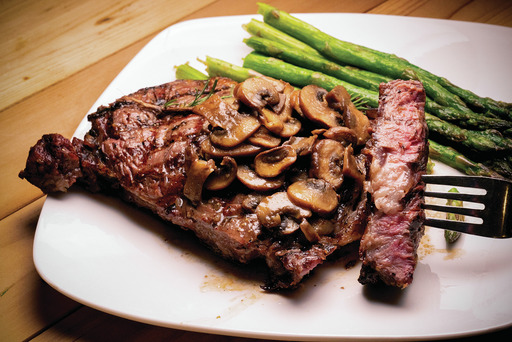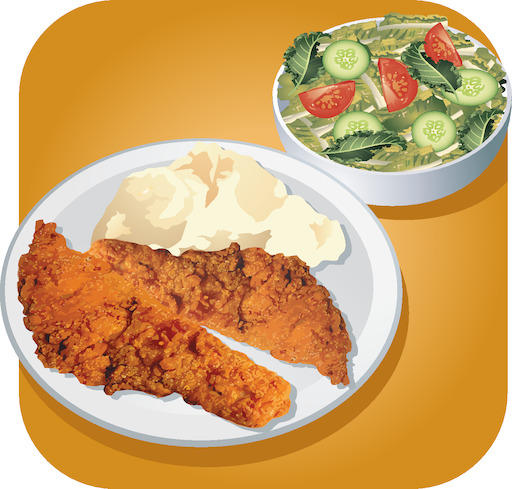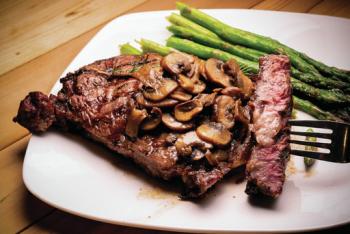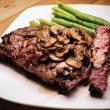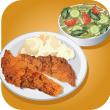Going Keto – yes or no?
If you were following the keto diet plan, breakfast this morning might have been eggs, bacon, Keto loaf bread (made with almond flour) and butter with coffee; or a frittata with meat, veggies and cheese, perhaps? Or, if you were running late, you whipped up a mug of Keto or bulletproof coffee: add coconut oil, butter or ghee, heavy cream and coffee in a blender. Churn it up and pour the frothy mix into a mug and go.
The standard keto diet (there are four variations) contains 75% fat, 20% protein and 5% carbs although these percentages may vary depending on the person’s needs. Consuming high fat foods while lowering your carbohydrate intake puts the body into ketosis, a metabolic state of burning fat for energy, and turning fat into ketones in the liver, which can supply energy for the brain. The other three variations are cyclical keto that includes two high carb days each week; targeted keto permits more carbs for those who work out; and the high-protein version with ratios of 60% fat, 35% protein and 5% carbs, according to healthline.com. The effects of ketosis begin after three to four days on the diet.
Cutting back to so few carbs means that sweet and starchy foods including ice cream, cookies, soft drinks; and pasta, bread, beer and others in your current diet will not be part of your keto diet.
When it comes to beverages on the keto diet, water is preferred. Keto newbies have an increased chance of becoming dehydrated. This is because the greatly diminished carb intake causes shifts in your fluid and electrolyte balance, according to Alyssa Tucci, RDN, nutrition manager at Virtual Health Partners in New York City in an article on everydayhealth.com. “Carbs are stored along with water in the body, as these stores are depleted, that water is lost along with them.” Tucci’s article also advised, “the body flushes out the buildup of ketones in urine, which also depletes water and sodium from the body.” Her recommendation: Drink half of your weight in water ounces per day.
If you decide to try the keto diet, be aware you may experience keto flu (healthline.com). Symptoms include feeling nauseous or tired; muscle cramps and aches, insomnia and headache, however, you will not experience vomiting, chills or fever, symptoms of seasonal flu. Keto flu usually presents the first week or two on the diet as your body adapts to burning fat instead of carbs, and adjusts to the lower salt and sugar intake.
Many people don’t get the keto flu whether they prepare for it or not. If you decided to be safe rather than sorry, add a pinch of natural salt to one of your glasses or bottles of water each day, eat foods high in magnesium (pumpkin seeds, almonds, and spinach), foods high in potassium (avocados and spinach); and foods high in salt or add some to that spinach you are eating increased magnesium and potassium. Go the sweeter route and add to your fat intake with a piece or two of 90% dark chocolate, make a low carb milkshake in the blender with almond milk flavored with coconut, chocolate and/or almond powder, and ice. (healthline.com)
Or have one of the fat bombs you made prior to beginning your keto journey. What’s a fat bomb? Small rolled circular sweet or savory mouthfuls of indulgence, or it feels indulgent, anyway! How do Keto cream cheese chocolate truffles, toasted coconut lemon delights and pizza bombs sound? (ketologic.com)
A keto diet can lead to weight loss, but your number on the scale isn’t the only benefit. According to www.hsph.harvard.edu/nutritionsource, “Along with weight loss, health parameters associated with carrying excess weight have improved such as insulin resistance, high blood pressure, and elevated cholesterol and triglycerides.” Low carb, ketogenic diets are also being considered for type 2 diabetes patients.
Keto also cuts down belly bloat and affects our gut health in a good way. We’ve got good bacteria and other microorganisms (called microbiome) in our gastrointestinal tract (stomach, small and large intestines) and what we eat affects the balance of the microbiome. “These microbes, when properly balanced, protect your immune system and assist with digestion. And when you eat well, exercise often, and lead a stress-free life, your gut microbiome stays healthy.” (ketologic.com)
When that balance is off due to your diet (pre-keto) you can end up with gut bloat and irritable bowel syndrome. (healthprep.com) Excellent foods for our gut following a keto diet include salmon, avocados, nuts, broccoli, berries, cauliflower (excellent plain or as a substitute for mashed potatoes), spinach, kale, and sauerkraut and other fermented foods.
What’s on the menu? Fatty fish – salmon, sardines and mackerel; poultry and meat (grass-fed if possible as animals fed this way have higher omega 3 fats and antioxidants), bacon, sausage, low carb vegetables including cauliflower, dark greens, lettuce, cabbage and zucchini squash; avocados; strawberries, watermelon, cantaloupe, peaches, raspberries, lemon, tomatoes; plain Greek yogurt, cottage and other cheese, and eggs.
A perfect keto (and pescatarian) dinner: salmon, mashed cauliflower and spinach salad and, for dessert, strawberries and cream; lunch: leftover chicken wrapped in arugula or kale (as the bread) with tomatoes, cheese and avocado; and a fat bomb for dessert. There are many apps and websites offering Keto recipes, and numerous books about the ketogenic lifestyle that include recipes. Following the suggestions and absorbing the basics may be the best way to begin eating the Keto way. You’ll find in no time you’ll be whipping up your own recipes.
We encourage everyone to consult their primary care professional on best courses of action in your individual health and how they may interact with any ongoing treatments.
Event Date
Address
United States

